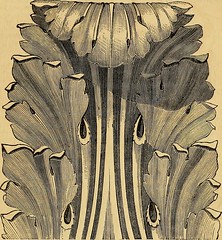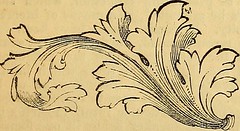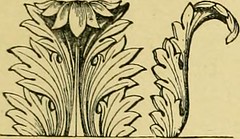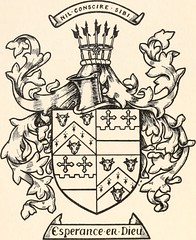
Big fan of idealised acanthus leaves. Big big fan. They're absolutely everywhere yet it's only recently that I realised I'd not come across much instruction on how to draw them from scratch. I assume designs would have been passed on to apprentices and so on, although I'm sure plenty of clever / lucky people can draw them freehand.
As far as I'm aware most reasonably complex artforms, particularly those that are designed to fit in a particular space, are designed from the ground up with an underlying 'scaffold' upon which the final form is drawn. This is how (it is believed that) Celtic knotwork was created, or at least it is possible to reconstruct this type of art using simple mathematical grids, building up to a full pattern. In fact I did this myself a couple of weeks ago at a 'crafternoon' with friends, using George Bain's 'Celtic Art: the methods of construction' (the edition linked to is a later one than mine) to create a copied pattern from scratch. It was the scaffolding that was actually copied, measured and scaled up to fit a particular space, then the final pattern emerged from the gridlines. You can see the photos of the work in progress and its final form on my secondary blog here.
I've not found a user-friendly equivalent of the Celtic knotwork book for acanthus leaves, though there is a detailed digitised book of yore that explains how it was done. I've not really got to grips with it. Some examples of acanthus leaves in art and heraldry are below, taken from the amazing Internet Archive Book images of out-of-copyright image resource, click on the image below to visit its page on Flickr and there are further links there to see it in its original context.
There are a couple of instructional drawing videos below and 'how to draw' books and blog posts I've found so far. More examples of acanthus art are further below.
Acanthus drawing instructions
How to draw the Acanthus, Part I // Part II // Part III / Part IV, Surface Fragments blog
Guide for the drawing of Acanthus, and every description of ornamental foliage
(1843), James Page
Google Books // Google Play (same thing, formatted differently, probably suitable for Android!) / Internet Archive version
Calligraphy design: acanthus leaves, Calligraphy Pen blog - simple instructions for turning a slightly wiggly line into something rather lovely. And another method for Acanthus Drawing.
General guidelines for drawing an acanthus leaf (PDF) from Mary May's woodcarver journey blog on 'acanthus leaf step by step' - this one is the multi-lobed straight leaf form.
Acanthus leaves
Twirling Ribbons and Twirling Acanthus Leaves
Painting acanthus leaves: Instruction from the Göttingen Model Book
Using freestyle acanthus leaves
art+works blog series
- Acanthus Lesson 1: A Proper Leaf, Part One (The Ro...
- Acanthus Leaf #2- How to: Forming the leaf shape
- Acanthus Leaf #3- Forming the leaf part II
- Acanthus Leaf #4- The Good Stuff
- Acanthus #5- Roll me over and do it again!
See also this heraldic stone carving time-lapse video showing acanthus leaves being carved from portland stone for the Holywell music room in Oxford.
More acanthus examples
William Morris 'Acanthus' wallpaper, example from V&A collection
Acanthus A5 sketchbook, from William Morris gallery shop
Filigree, flourishing, mantling - a reference on Pinterest
Wikipedia - Acanthus (ornament)




Acanthus leaves feature very heavily in heraldic mantling (the bit next to the crest which is above a coat of arms) though other similar-looking stylised leaves are also involved.





No comments:
Post a Comment
Comment policy: I enthusiastically welcome corrections and I entertain polite disagreement ;) Because of the nature of this blog it attracts a LOT - 5 a day at the moment - of spam comments (I write about spam practices,misleading marketing and unevidenced quackery) and so I'm more likely to post a pasted version of your comment, removing any hyperlinks.
Comments written in ALL CAPS LOCK will be deleted and I won't publish any pro-homeopathy comments, that ship has sailed I'm afraid (it's nonsense).